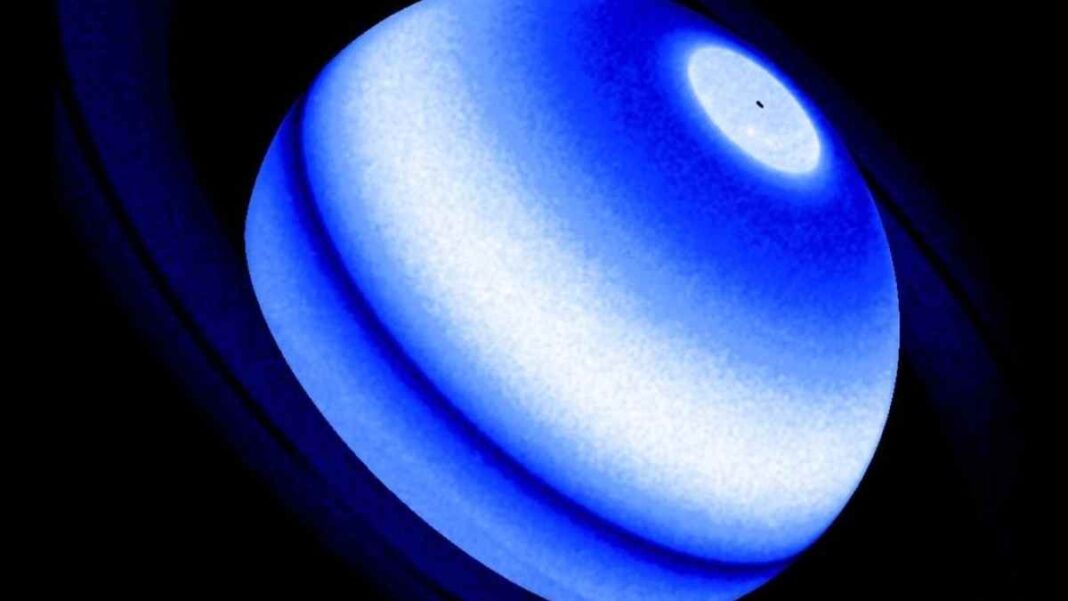UNITED STATES: A recent study using data from multiple space missions, including the Hubble Space Telescope, Cassini probe, Voyager probes, and International Ultraviolet Explorer mission, has discovered that Saturn’s iconic rings are responsible for heating its upper atmosphere.
The study detected an excess of ultraviolet radiation in Saturn’s atmosphere using data from these missions, indicating the presence of hot hydrogen spectral lines.
According to the European Space Agency (ESA), the most probable explanation for this phenomenon is that icy ring particles are falling onto the planet’s atmosphere, resulting in heating.
The rain of particles could be caused by various factors such as micrometeorites, bombardment by solar wind particles, solar ultraviolet radiation, or electromagnetic forces that collect electrically charged dust.
This discovery has important implications for predicting the presence of ring systems around other planets. By using decades of UV data, the researchers found that there is no seasonal difference in the level of UV radiation.
This finding suggests that the presence of ring systems may not necessarily be correlated with seasonal changes. The researchers are now conducting further research to explore the unexpected interaction between Saturn’s rings and upper atmosphere.
Saturn is known for its iconic rings, which consist of billions of individual particles of rock and ice that orbit the planet. These rings are approximately 280,000 kilometres in diameter but only a few hundred metres thick. The rings are believed to have formed from the debris of comets, asteroids, or even shattered moons.
The study’s results have provided new insights into the complex interactions between Saturn’s rings and upper atmosphere. The researchers believe that the rain of icy particles from the rings plays a significant role in shaping the planet’s atmosphere.
The discovery of the heating effect caused by Saturn’s rings could also provide a tool for predicting the presence of ring systems around other stars.
The study’s findings have been published in the Planetary Science Journal and could lead to further research into the fascinating relationship between ring systems and planetary atmospheres.
Also Read: Indian-origin Engineer Amit Kshatriya Appointed as Head of NASA’s Moon to Mars Program



